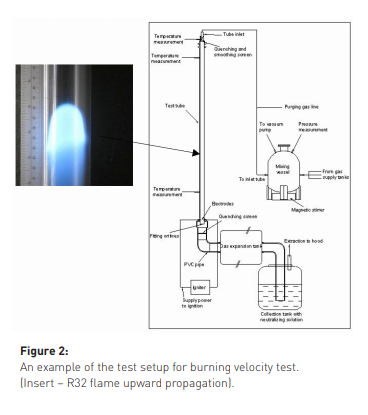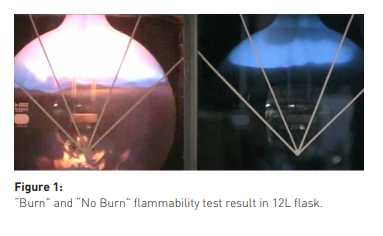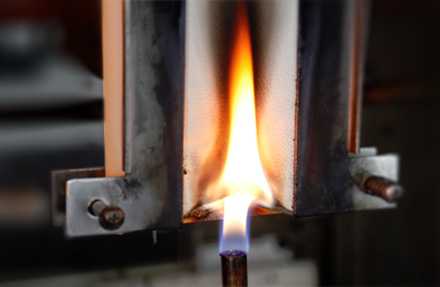Site: Home > News and events 



FLAMMABILITY TESTING OF REFRIGERANT BLENDS
Improving efficiency, lowering ozone depletion (ODP),lowering contribution to global warming (GWP) are the driving forces behind new chemicals and new formulations being brought to the market by the industry.
ASHRAE Standard 34 -2010 “Designation and Safety Classification of Refrigerants” specifies rigorous testing,modeling and data collection process to which any newly formulated blend brought to the market has to be subjected. The result of this process is assignment of the“R” number to the given blend, certifying that the safety classification of the blend was based on the required data.
A part of this process is flammability determination which includes fractionation analysis and flammability testing. Multi-component blends (some components are flammable), even if initially non-flammable may become flammable as the composition of vapor phase and liquid phase constantly changes during a slow leak. Standard 34 defines the way to determine and confirm WCF (worst case formulation) and WCFF (worst case fractionated formulation) of the given blend.
It identifies seven refrigerant leak scenarios for which data has to be analyzed. With temperature ranging from (-40)oC to 60 oC, and tank fills from 15% to 90% the leak simulations will correspond to typical storage and transportation conditions. The data can be acquired either by computer simulation or by running fractionation tests.If the data comes from a computer modeling, the leak scenario that yields WCFF has to be verified by experiment.Standard 34 determines how to run the fractionation test(isothermal leak, leak rate, GC analysis) and how frequent data acquisition should be.
The fractionation analysis yields WCFF(s), the worst composition(s) from flammability standpoint of either vapor or liquid phase of the blend.
These compositions have to be tested for flammability(according to Annex of ASTM 681 – “Test method for materials with large quenching distances, which may be difficult to ignite”) with some additional requirements stated in Standard 34. For refrigerants with flammability class 1 and 2 testing has to be done in 12L flask, for class 3 in either 5L of 12L flask. WCF composition has to be tested at 23oC, while WCFF composition test temperature is set to 60oC. For the test to yield a “Burn” result, the flame has to cross a boundary of 90o fan anchored at ignition point(between electrodes). The blend concentration with airmtesting range has to cover from 1 to 30 %vol in 1% increments. The typical “Burn” and “No Burn” result in 12L flask is shown in Figure 1.
Once any of the tested compositions turns out to be flammable, LFL data (Lower Flammable Limit) at 23oC for this particular composition needs to be determined.

The full application seeking “R” number from SSPC 34 needs to include flammability and fractionation data, as well as, administrative data, properties of the blend and components,toxicity data, MSDS for components and blend.

In the recent development of the standard an additional subclass of flammability was added to existing three: 1-nonflammable,2- lower flammability, 3- higher flammability.
The additional subclass divides the low flammable class into 2 and 2L. A measurement of burning velocity of the blend is required to have class 2L assigned. The Standard references method used for this flammability testing.In Figure 2 an example of a test bench suitable for this test is shown together with the picture of the R32 flame propagating upwards. The benchmark refrigerants for this test are R32 and R152a. The results of the burning velocity measurements for these two chemicals must fall within±10% range of established values. The analysis of videotaped test yields a value of linear flame front velocity, as well as, flame front surface area needed to determine burning velocity Su.In general, SCE (Safety consulting Engineers, Inc.) provides the whole application preparation process that would include flammability and fractionation testing, blend property calculations and analysis, as well as toxicity analysis for the components involved.

2018-12-06 13:51
- Related News
What's the difference between a hydraulic oil filter and a regular oil filter?
Interpretation of Paper Tear Strength Standards
What is the significance of the LA abrasion test?
What is a UTM machine used for?
What is the principle of a capillary rheometer?
What is the difference between conical and parallel twin-screw extruders?
What is the ISO standard for color fastness?
What is the use of a roundness tester?
The Role of Dust-Proof Robot Protective Clothing
What is the difference between Taber and Martindale abrasion tests?
